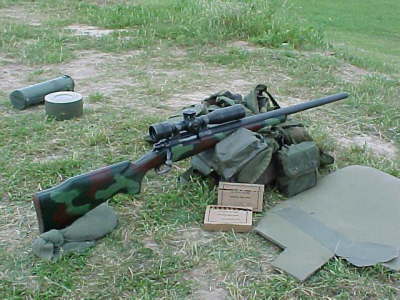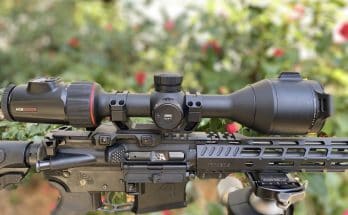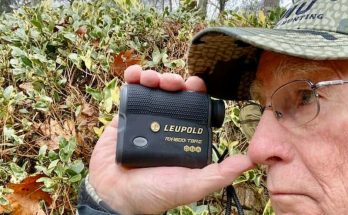The majority of Military and Police precision rifles are variations the AR15 and Remington M700P rifles. Both of these types of rifles are used by civilian hunters and marksmen for many types of hunting situations, matches, and fun shooting. Let’s look at the AR15’s and M700’s available to the public and see how we can benefit from the special features that are normally associated with tactical rifles. Below are some of the tactical rifles features that may help you in the field or at the range.
Stocks
Synthetic stocks are a direct result of the need for rugged dependability and accuracy for tactical rifles. Every tactical rifle has a synthetic stock for strength and also to minimize the effects of weather. Synthetic stocks are made from plastics, Kevlar, fiberglass and many other exotic materials , and prices vary according to quality and material used. The bottom line is that they are stronger than wood and they don’t swell or bind when they get wet, or if they are exposed to extreme temperatures.
They can be shaped around metal bedding blocks molded right into the synthetic material. McMillian and H.S. Precision stocks are used by most top of the line Tactical rifle and custom hunting rifle builders and are readily available to the public. Other synthetic stocks are produced by companies such as Ramline, Uncle Mike, Bell & Carlson, and Hogue. The major gun makers offer many models and grades of rifles with synthetic stocks and also offer them as replacement stocks. The HS Precision stock has found its way to the Remington Sendero and Varmint rifles as well as other brands such as Winchester and Weatherby. These stocks have an aluminum bedding block molded into the stock which eliminates pressure on the barrel or warping when they get wet. Regardless of the weather, the point of impact will remain constant.
Scopes
Scopes are another area where sportsmen can benefit from tactical requirements. Tactical scopes requirements have given us the Mil Dot range finding reticle, illuminated crosshairs, antiglare lenses coating, long range focusing adjustments, matt finishes, adjustable mounts and other features. The Mil Dot reticle is probably the most significant improvement to scopes that has come from military requirements. Police shooters normally operate at close range of no more than 100 yards. At that range the rifle bullet hardly rises or falls from line of sight to the target. Military shooters usually operate at much longer distances, sometimes in excess of 1000 yards and must know precisely the distance to the target.
The Mil Dot gives the long range rifleman the capability to accurately estimate the range to the target, provides appropriate aiming or hold over point, and hold off for wind drift of the bullet. Last year in Wyoming while shooting prairie dogs at 400 yards in a 25 MPH wind made me promise I would have a Mil Dot reticle in my Leupold 6.5x20AO on my next trip. There was no way I could guestimate the range or play the wind. For those who think a laser range finder is the answer, think again. They are useless on the flat prairie for small critters like sod poodles.
Bipods
You will always see a bipod with a tactical weapons system. They offer the needed stability the shooter needs for accurate shot placement. Bipods can be a great help to the hunter, especially in open country, but they do add weight to the rifle that you will feel during long treks afield. The leading producer of bipods for the police, military and sportsman is Harris. They make several models for the tactical shooter or sportsman. They are relatively light weight., have adjustable legs, and are easy to attach and remove via the front sling stud. To make them easier to carry and quick to employ, the legs are collapsable and can be folded up parallel to the barrel when not in use. See the Harris web site to see different models and prices.
Barrels
The trend in .308 caliber tactical rifles barrels is that shorter is better, especially in urban SWAT situations. This may cause concern for some, thinking that velocity or accuracy may suffer with such a short barrel. TACOPS disagrees based on their experimentation. They have found that a .308 caliber rifle looses no accuracy, and virtually no velocity, when barrels are shortened from 24″ to 18″. Click here for their report. The new Remington LTR has a 20″ fluted barrel, so apparently they must be in agreement.
The 20″ barrel is easier to handle in close quarters and lighter in weight because of the shorter length and weight reducing flutes. The flutes also provide the rigidness to provide heavy barrel accuracy. How does this help the sportsman? The LTR can be a tack driving deer rifle weighing in at only 7.5 pounds, and capable of half inch groups at 100 yards. This gun could rival the so called “Bean field” rifles costing 5-10 times as much. They are also available in the new 300 Short Ultra Mag for the long shots at heavy game.



